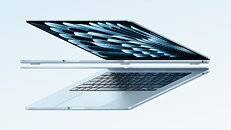
AAEON Release the World's Smallest 13th Gen Intel Core-Powered Single Board
In another breakthrough in single-board computing, AAEON has released the de next-RAP8, the world's smallest board featuring embedded 13th Generation Intel Core Processors, measuring just 3.31" x 2.17" (84 mm x 55 mm). Available with a choice of the Intel Core i7-1365UE, Intel Core i5-1335UE, or Intel Core i3-1315UE, all at 15 W, the de next-RAP8 can leverage up to 10 cores and 12 threads. The board also boasts up to 16 GB of LPDDR5x system memory and Intel Iris Xe graphics.
Designed for drone and robotics applications, the de next-RAP8 hosts two Intel-based RJ-45 ports, one for 2.5GbE and one for 1GbE speeds, alongside two USB 3.2 Gen 2 Type-A ports on its rear I/O. Rounding off its physical ports are an HDMI 1.2a port and a 12 V DC Jack. The board adds to these with a relatively dense set of pin headers and connectors. Given the board's target application fields being robotics and drones, the most notable inclusions are an 8-bit GPIO, four USB 2.0, and two RS-232/422/285 signals, all of which are available via a 40-pin header on the board's CPU-side. For more industrial use, the de next-RAP8 offers SMBus/I2C as an optional function.
Designed for drone and robotics applications, the de next-RAP8 hosts two Intel-based RJ-45 ports, one for 2.5GbE and one for 1GbE speeds, alongside two USB 3.2 Gen 2 Type-A ports on its rear I/O. Rounding off its physical ports are an HDMI 1.2a port and a 12 V DC Jack. The board adds to these with a relatively dense set of pin headers and connectors. Given the board's target application fields being robotics and drones, the most notable inclusions are an 8-bit GPIO, four USB 2.0, and two RS-232/422/285 signals, all of which are available via a 40-pin header on the board's CPU-side. For more industrial use, the de next-RAP8 offers SMBus/I2C as an optional function.












































































